Fubotv earnings beat by $0.10, revenue topped estimates
Introduction & Market Context
NextNav (NASDAQ:NN) is advancing its strategy to develop a terrestrial backup for GPS systems, according to the company’s Q2 2025 presentation. The positioning, navigation, and timing (PNT) technology provider is leveraging its spectrum assets in the lower 900 MHz band to create what it describes as a critical national security solution.
Trading at $15.51 as of August 6, 2025, NextNav has seen its stock price more than double from its 52-week low of $6.47, though it remains below its high of $18.54. The company’s market capitalization stands at approximately $1.8 billion, despite ongoing financial challenges reflected in its Q1 2025 results, which showed a net loss of $58.6 million on revenue of just $1.5 million.
Strategic Initiatives
NextNav’s presentation emphasizes the vulnerability of satellite-based GPS systems to jamming, spoofing, and natural phenomena, particularly in indoor and urban environments. The company is positioning its terrestrial solution as a critical complement to existing systems.
As shown in the following slide detailing the need for terrestrial GPS backup:
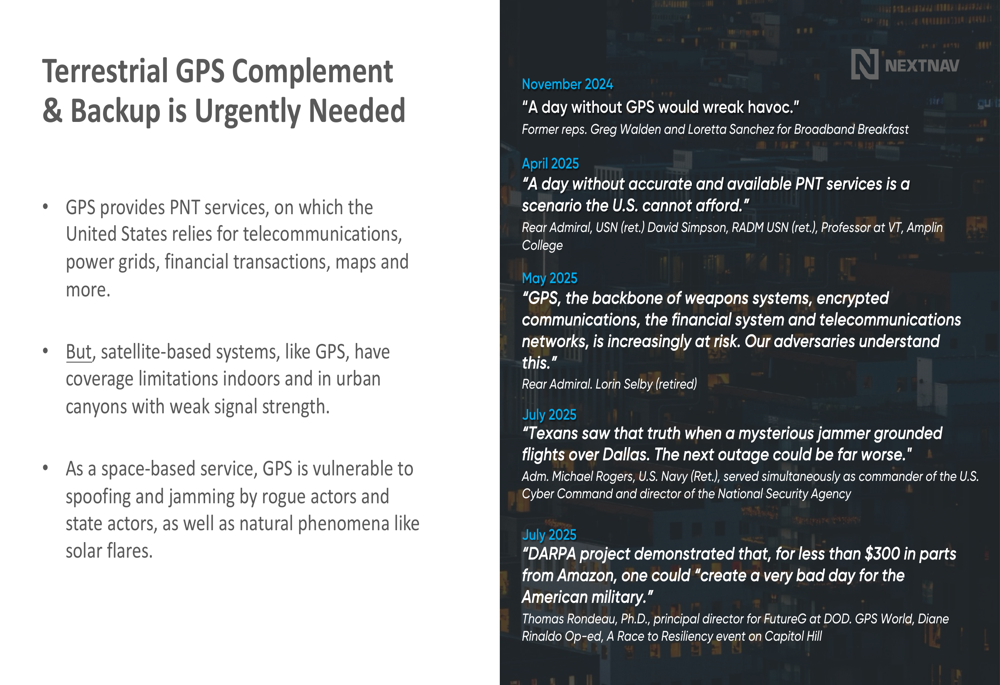
The company’s proposed solution leverages its spectrum holdings to create a 5G-based PNT network that would provide resilient positioning and timing services. NextNav plans to partner with existing 5G network providers rather than building its own infrastructure, potentially reducing capital expenditure requirements.
The following slide outlines NextNav’s approach:
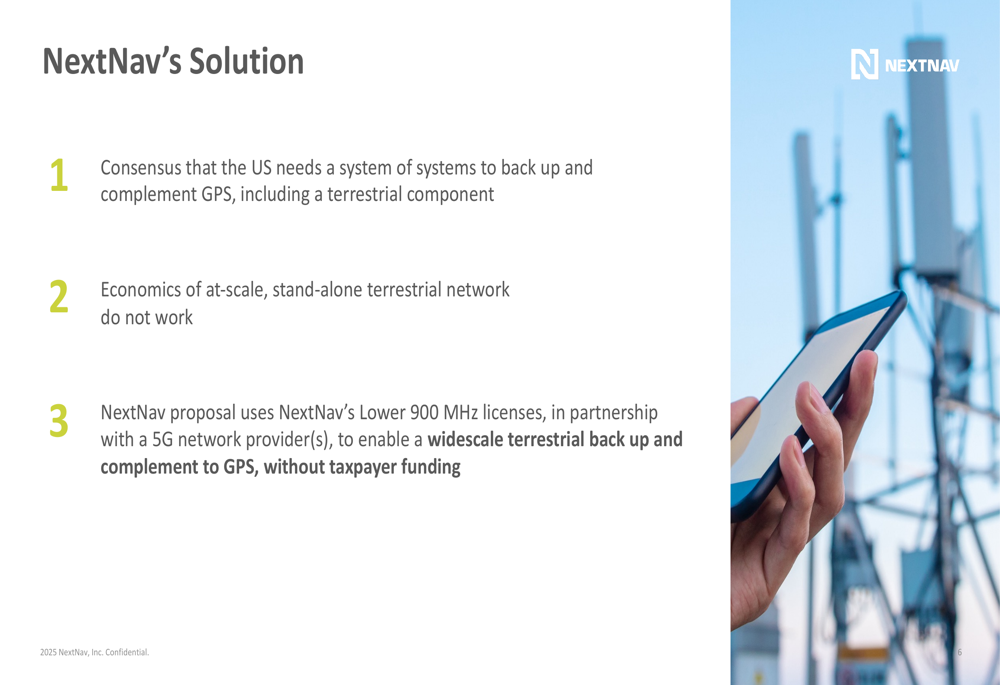
Spectrum Assets
Central to NextNav’s strategy is its spectrum portfolio, which covers over 96% of the U.S. population. The company holds rights to over 4 billion MHz-POPs in the lower 900 MHz band, which it describes as ideal for both PNT applications and broadband services due to its propagation characteristics.
The following map illustrates NextNav’s extensive spectrum coverage:
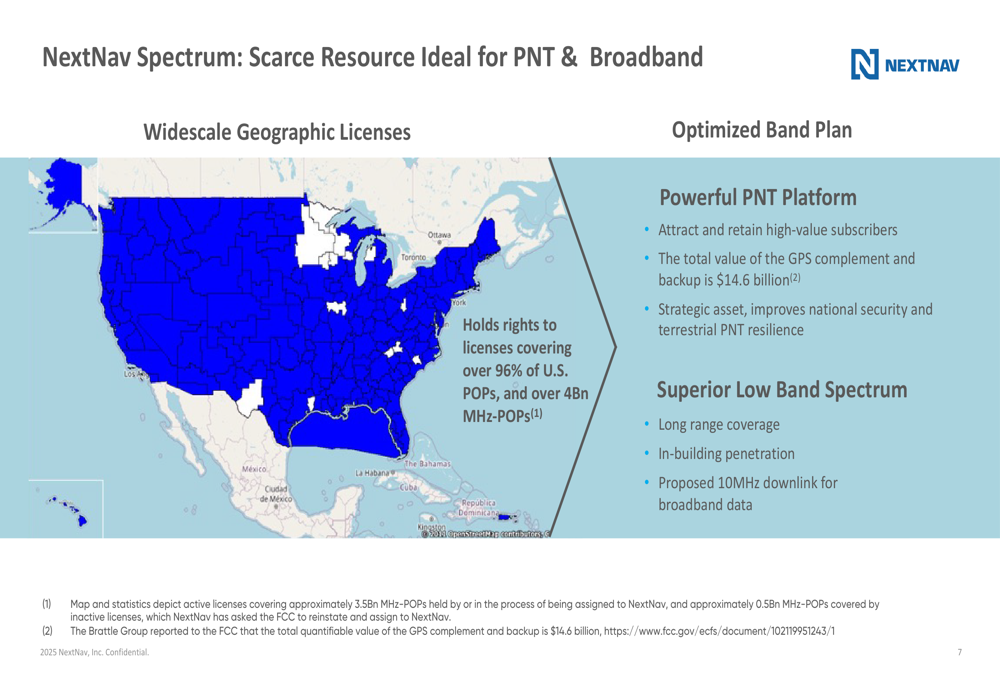
NextNav has proposed rebanding its current spectrum allocations to create a paired 5+10 MHz block optimized for PNT and 5G services. This proposal is currently under consideration by the Federal Communications Commission ( FCC (BME:FCC)).
Market Opportunity (SO:FTCE11B)
The company identifies numerous use cases for its technology across both government and commercial sectors. These range from emergency services and military applications to logistics, consumer devices, and financial services.
The comprehensive range of applications is illustrated in this slide:
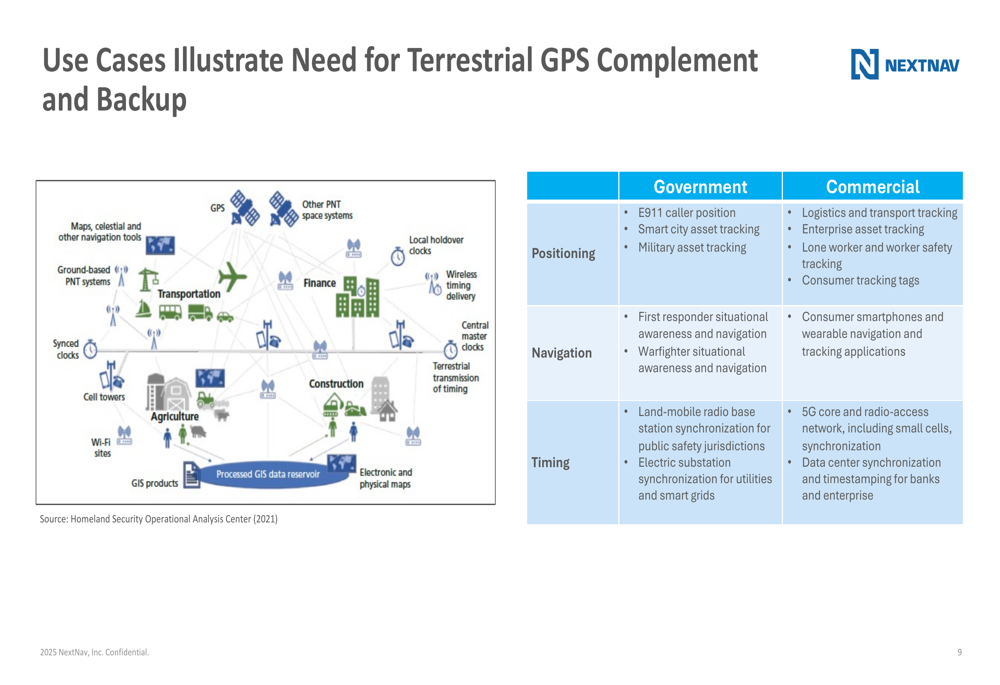
According to a report by The Brattle Group cited in the presentation, the total quantified value of having a terrestrial backup to GPS is estimated at $14.6 billion. The report also quantifies potential economic losses from GPS outages of varying durations, suggesting that NextNav’s solution could prevent losses ranging from $663 million for a one-day outage to $31.9 billion for a 30-day outage.
The economic impact is detailed in the following slide:
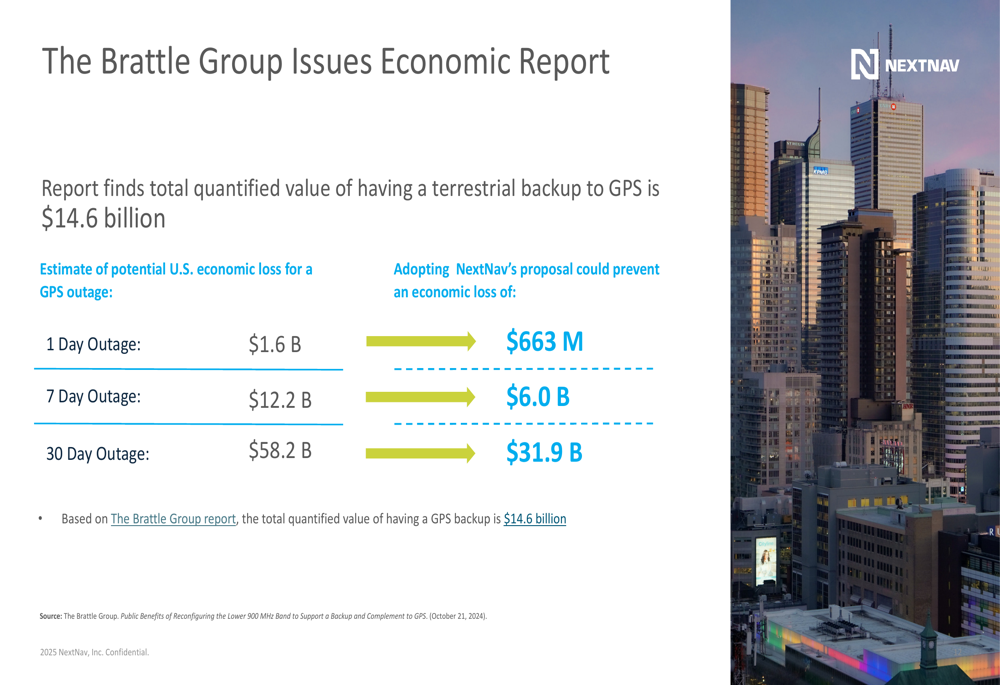
Regulatory Progress
NextNav’s strategy depends significantly on regulatory approval for its spectrum rebanding proposal. The company has filed a petition for rulemaking with the FCC and outlined a timeline extending through August 2025.
Key milestones in this regulatory process include:
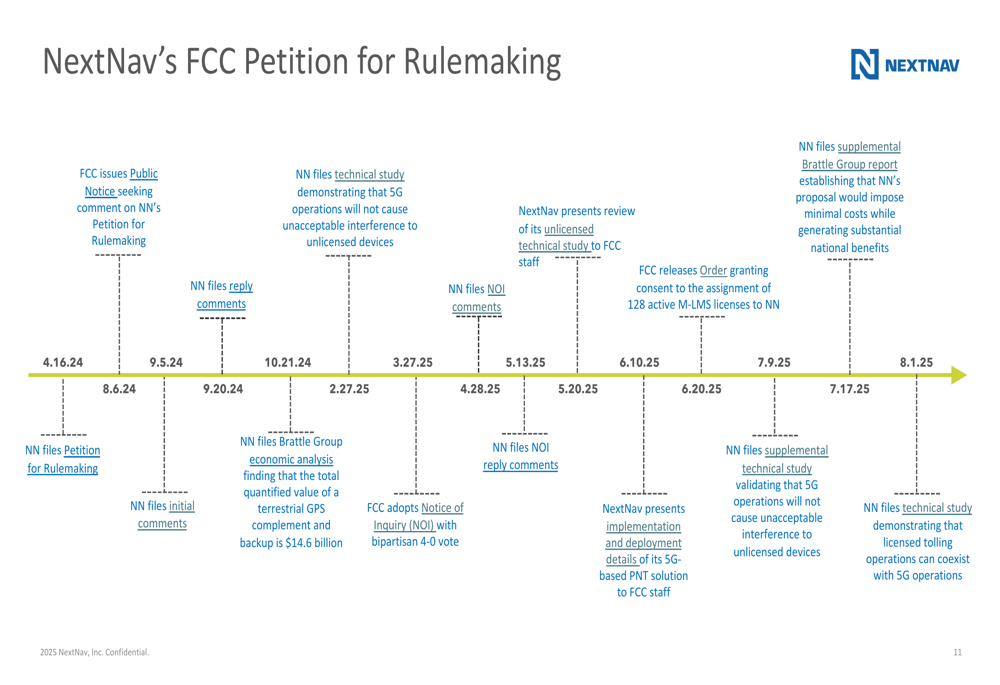
Financial Position
Despite its ambitious plans, NextNav faces significant financial challenges. While the presentation highlights the company’s $176.1 million in cash and marketable securities as of Q2 2025, this must be viewed in the context of its substantial operating losses.
According to the company’s Q1 2025 earnings report, NextNav recorded a net loss of $58.6 million on revenue of just $1.5 million. Operating expenses increased year-over-year to $18.5 million, raising questions about the company’s burn rate and path to profitability.
The company’s balance sheet summary states:
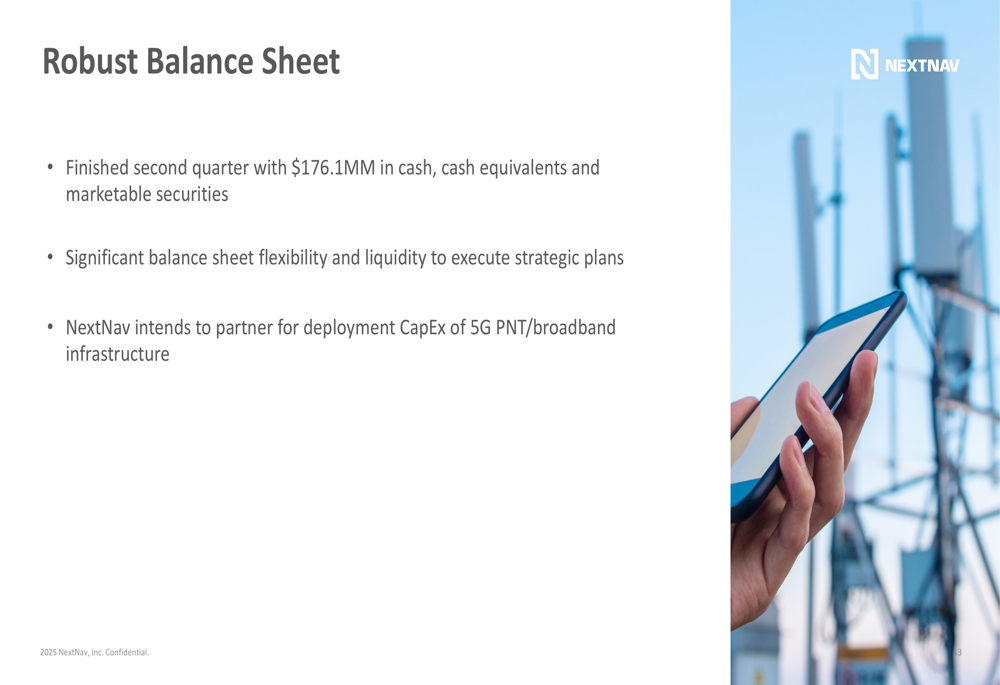
Forward Outlook
NextNav’s presentation emphasizes partnerships with major telecommunications providers including AT&T (NYSE:T) and Verizon (NYSE:VZ), as well as government agencies like NASA. These relationships could be crucial for the company’s growth strategy, particularly as it seeks to implement its 5G PNT network architecture.
The company’s leadership team, led by CEO Mariam Sorond, brings experience from major telecommunications and technology companies. During the Q1 2025 earnings call, Sorond emphasized that NextNav’s solution is "100% software based," potentially offering cost advantages over hardware-intensive alternatives.
As NextNav continues to pursue regulatory approval and develop its technology, investors will be watching closely for signs of commercial traction and improved financial performance. The substantial gap between the company’s current revenue and its projected market opportunity highlights both the potential upside and the execution risks in its strategy.
Full presentation:
This article was generated with the support of AI and reviewed by an editor. For more information see our T&C.
